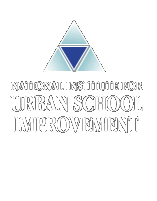
---

---

---

---

---

---

|
 |
 |
NIUSI
part of the Education Reform Networks
Resource Development & Allocation
-
A Sound Education
Although band, chorus, and orchestra are still mainstays of most school music programs, many schools are incorporating technology, multicultural music, composition, and improvisation into the course offerings. Music teachers must balance tradition and innovation.
-
Anti-Bias Teaching To Address Cultural Diversity
Multiculturalism must be integrated into classrooms and the curriculum, and it must be all-encompassing, taught through formal lessons and modeled and demonstrated at all times. Describes how teachers can create an anti-bias curriculum and promote a multicultural or anti-bias classroom.
-
Bilingual School Teachers' Cultural Mission and Practices in Alberta Before 1940
Explores how bilingual school teachers in the past (1934-39) in Alberta (Canada) responded to competing Francophone and Anglophone ideological cultural reproduction discourses in their curriculum practices. Studies how the exercise of power can influence teachers' decisions to either give legitimacy or resist reproducing in their classrooms certain forms of knowledge and cultural orientations.
-
determinants of public education expenditures: Longer-run evidence from the states.
Determines how long-run changes in certain factors affect resources devoted to K-12 education.
-
Equity-driven achievement-focused school districts.
Demonstrates that whole school districts (rather than just individual schools) and the Texas educational accountability system can play powerful roles in facilitating academic success for children of color and those of low socioeconomic status.
-
Facilitating Multicultural Programming through Cooperative Extension FCS Programs
Responses from 122 extension professionals showed that 56% offered programs targeted to specific groups. Deterrents to multicultural programs included lack of time, resources, and limited training; 95% recognized the need to address cultural differences and were receptive to learning about different groups.
-
Financing education in the twenty-first century: What state legislative trends of the 1990s portend.
Reviews of school finance legislation, analyzes five year trends in funding and discusses future funding ideas.
-
How and where the education dollar is spent.
Describes budgetary authority at the federal, state, school district, and school site level, discussing spending patterns and reviewing research on site-based management. In spite of great difference among districts, most are remarkably similar in allotting 60% to 63% of their budgets to instruction and dividing the rest among student services including administration.
-
How Do District Management and Implementation Strategies Relate to the Quality of the Professional Development That Districts Provide to Teachers?
Study uses the data from a national probability sample of district professional development coordinators in districts that received federal funding from the Eisenhower Professional Development Program. Results found that management/implementation strategies, such as aligning professional development to standards and assessments, continuous improvement efforts, and teacher involvement in planning, are associated with the provision of higher quality professional development for teachers.
-
Infusing Multicultural Counseling Competencies into Counselor Training Curriculum
Multicultural counseling competencies have become an increasingly important component of counselor training. This article presents rationale for infusing multicultural competencies into select CACREP course areas, which are assessment, helping relationships, professional identity, and career development.
-
Investment in teacher quality pays off
Reveals that teacher quality is the variable that most influences student achievement in the United States. Linking of percentage of teachers with full certification to student achievement; Realization of gains from small class sizes through the hiring of qualified teachers.
-
Leaving too many children behind: A demographer's view on the neglect of America's youngest children.
The Institute for Educational Leadership. Presents a discussion on understanding of why, in the wealthiest nation in the world, we invest such a pitifully small percentage of our resources and our concern in the early years of the people who will obviously inherit the nation—our youngest children.
-
Major Trends and Issues in Early Childhood Education: Challenges, Controversies, and Insights. (Second Edition)
Noting that understanding the contexts, continuities, and controversies of early childhood education is especially challenging because of the diversity in the field, this book provides a critical examination of the issues and controversies surrounding early childhood practices, policies, and professional development.
-
Matching spending with strategy: Aligning district spending to support a strategy of comprehensive school reform. District Issues Brief.
Offers five ways in which districts can shift their spending and staffing to align with reform efforts. New American Schools tool is one of three that encourages districts to re-evaluate their spending.
-
Mexican Americans and Other Latinos in Postsecondary Education: Institutional Influences. ERIC Digest
The Latino population of the United States has grown dramatically in recent years, but Latino postsecondary participation and graduation rates have not increased. In 1998, only 7 percent of Mexican Americans (11 percent of all Latinos) held college degrees, versus 25 percent of the total U.S.
-
PDS Partnerships Come of Age
Describes professional-development schools, partnerships between university teacher-education programs and schools, involving professors, teachers, and teacher interns. Tells how mutual respect and collaborative innovation developed in one such professional-development school in Camden, New Jersey.
-
Professional Development Guide for Educators. The Multicultural Resource Series, Volume 1
This guide presents a collection of personal essays written by educators who describe how multicultural education has transformed their teaching. It also includes resources such as multicultural organizations, publications, videos, and Web sites.
-
Quality and cost.
Examines a mixed-methodology study of collaborative leadership using cost containment strategies.
-
Reinvesting in teachers: Aligning district professional development spending to support a comprehensive school reform strategy.District Issues Brief.
Analyzes professional development spending in four urban districts to assist district leaders in planning and developing a professional development strategy that supports the implementation of comprehensive school reform designs.
-
Resources and school effectiveness : A study of investment strategies in New York City public schools and districts.
Reports findings of two-part study and establish that New York City Community school districts contribute significantly to student achievement. Characterizes "district effects" and identifies a variety of instructional practices that differentiate high-performing from low-performing districts through comparative case studies of four sample districts.
-
Safe Passage: How Philanthropy Is Working Together to Help All of America's Youth Connect by Age 25
Released in July 2006, Safe Passage is the latest publication of the Youth Transition Funders Group (YTFG), a consortium of major philanthropic foundations dedicated to strategic collaboration to address issues of juvenile justice, foster care system reform, and out-of-school/struggling youth. The publication provides examples of solutions implemented across the country that have proven outcomes for youth.
-
School district spending on professional development: Insights available from National Data (1992-1998).
Analysis provides new insights into the amount U.S. school districts spend on teacher professional development.
-
Section 169 Profile
The profile presents current and /or historical information for all 50 states, the district of Columbia and Puerto Rico, which are eligible to receive IDEA Part B, Section 619 funds.
-
Selecting Books for the Elementary School Library Media Center: A Complete Guide
This book focuses on the selection of books in an elementary school and on the resources designed to help in that process. Resources that support other aspects of collection development are identified, along with a number of established surveys of children's literature that discuss specific titles.
-
Self-Awareness, Cultural Identity and Connectedness: Three Terms To (Re)Define in Anti-Bias Work
Building a strong but flexible identity and learning to deal with diversity are two main educational goals for early childhood education. Because identity is replacing the older concept of race and is serving as the basis for a new form of segregation, it is necessary to redefine the terms "identity" and "cultural identity." Identity involves processes in continual flux, resulting in images of identity at a particular moment.
-
Structural influences on the internal allocation of school district resources: Evidence from New York state.
Examines the potential for inconsistent resource allocation decisions to be made at different administrative levels of school districts and schools.
-
The Effects of Modified School Calendars on Student Achievement and on School and Community Attitudes
This review synthesizes studies of the effects of modifying the academic calendar in Grades K-12 to do away with the long summer break while not increasing the length of the school year. The synthesis indicated that the quality of evidence on modified calendars is poor.
-
The Transformation of the Teachers' Role at the End of the Twentieth Century: New Challenges for the Future
Rapid global changes have transformed education for the elite into mass education, resulting in the following: new teacher responsibilities, less educational activity by families, mass media access to learning, multicultural education models, change in the social worth of education and status of teachers, fewer resources for education, decline of authority and discipline, and teacher overload. (SK).
-
Transformational Leadership, Student Achievement, and School District Financial and Demographic Factors
This paper explores whether or not there is a statistically significant relationship between superintendent leadership styles and selected financial and demographic factors in Texas school districts. Specifically, it examines the relationship between superintendent leadership styles and (a) student achievement as evidenced by district ratings, and (b) selected school district financial and demographic factors.
-
Tribal Libraries: And Still They Rise
Studied tribal libraries through visits to libraries in Oklahoma, New Mexico, and Arizona. Tribal libraries serve as key information centers for the tribe's sovereign nation, and are almost always the education center of the community.
-
When theory hits reality: Standards-based reform in urban districts.
This book presents a review of findings from a study of the Pew Charitable Trusts' four-year grants to seven urban school districts to support standards-based reform.
|
| |
 |
|





